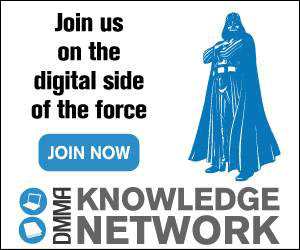If done right, the integration of game mechanics into market research, that is, ‘gamification’, could lead to improved engagement of research participants and thus better completion and return rates as well as better quality data – all worthy goals to strive for.
So concluded Kyle Findlay, gold winner of the overall best paper at the recent annual conference of the Southern African Marketing Research Association (SAMRA) at the Rosebank Crown Plaza in Gauteng. His research on the South African Political Twittersphere, for which he and co-author Paul Oosterveld took joint-silver, also revealed some interesting statistics and trends.
According to Findlay, the term ‘gamification’ has become a buzzword in the business world and within the market research industry in the past few years.
“Ensuring that respondents are engaged in the research task at hand is one of the most important considerations when conducting a survey (unless one is dealing with passive data collection sources) since engaged respondents generally give better data. Disinterested respondents are more likely to engage in unwanted practices such as straight-lining questions and/or dropping out of the research entirely before completion. It is also especially important to keep respondents engaged since traditional research response rates continue to decline – a worrying trend for the industry,” Findlay stressed.
Thus, it is vital that respondents are engaged, and gamification has something to offer in this area, reckons Findlay.
Previous research by him and colleague Alberts has shown that market research online communities (MROCs) can be positively affected by gamification elements. Building on their research, Findlay stated that game mechanics can be integrated into market research in many ways: some subtle, such as the inclusion of a progress bar showing respondents how close they are to completing a survey, and some fundamental (such as turning a survey into a video game with animations and characters). “It is important to stress though that gamification generally does not imply turning research applications into video games with bright colours, flashing lights and cute mascots. It can be far more subtle than that. Gamifying a research methodology could rely on something as simple as changing the way in which a question is worded by framing it as a challenge to respondents,” Findlay stressed.
Perhaps one of the best examples of a gamified platform is Facebook, he added. “Facebook includes many mechanics that would sit quite comfortably under the ‘gamification’ moniker. It includes elements of status and self-expression by allowing one to share one’s thoughts and seeing others’ reactions.
“At a physiological level, it relies on complex reward schedules that induce spikes of feel-good neurotransmitters such as dopamine in our brains, thus encouraging us to constantly check our profiles to see if others have responded to, ‘Liked’ or shared our updates. Indeed, just as Pavlov taught his dog to salivate at the thought of food and Skinner taught his rats to navigate a maze, so too does Facebook teach its users to navigate a complex social maze in search of mental rewards that ultimately work on our body at a physiological level. The mechanisms that form the architecture of this social maze all fall under the gamification banner,” Findlay said.
By paying careful attention to wording and framing questions on deciding how to word and frame the questions, and considering which questions to include (rather than the mechanics behind the question), will take researchers a long way towards improving their respondent engagement and the quality of their data.
Political Twittersphere
Social research via platforms like Twitter is a whole new ball game requiring a paradigm shift. It brings about its own unique challenges of complex systems, influence and dynamics which need to be factored in, Findlay concluded in his enlightening presentation titled Mapping the South African Political Twittersphere.
He believes social market research tends to be misunderstood by market researchers, particularly insofar as Twitter users and followers are essentially participants, not respondents.
A survey of South Africa’s political Twittersphere for the period Sept 2011 to March 2012 revealed some interesting statistics regarding tweeting, tweets by and tweets to influential South African politicians. For purposes of this Twittersphere research, the types of analyses comprised hash tags, structural network, betweeness centrality, authority (HITS), community detection and influence.
In the political arena, and in terms of tweet data, Helen Zille @helenzille is undoubtedly South African ‘twitter queen’ with 28,500 tweets, roughly 10 times as many as the Presidency @PresidencyZA with 3,500 and president Jacob Zuma @SAPresident with 2,900.
The top ten by follower count (in the categories black influentials, news media, technology, sportsmen & celebrities and Proudly SA & DA are: Bonang M @Bonang_M, Julius S Malema @Julius_S_Malema, Helen Zille @helenzille, Dineo Ranaka @dineoranaka, Jacob Zuma @SAPresident, Bryan Habana @BryanHabana, John Smit @JohnSmit123, Real Black Coffee @RealBlackCoffee, David Kau @davidkau1 and Albie Morkel @albiemorkel.
However, when it comes to authority, Helen Zille is first on the top-10 list with 138 160 followers, followed by Pres Jacob Zuma with 114 137 followers. Mail & Guardian is a distant third with 48 832 followers. Others on the top-10 authority list are the Presidency (@PresidencyZA), City Press Editor Ferial Haffajee (@ferialhaffajee), the DA’s Lindiwe Mazibuko (@LindiMazibuko), journalist and author Mandy Wiener (@MandyWiener) and Times Live (@TimesLLIVE).

Caption: Kyle Findlay (right), gold winner of the overall best paper at the recent annual conference of (SAMRA) receiving his award from Prof Adré Schreuder.
“Influence is contextual and to understand true influence, the particular person/tweeter needs to evoke reaction,” Findlay pointed out.
Even on the top-10 sportsmen & celebrity list Helen Zille comes out tops with a follower count of 157 642, followed by Bryan Habana (100 141), Albie Morkel (94,593), Mark Boucher (84,564), John Smit (84,529), Cricket SA (61,536), SARU (60,280), Trevor Immelman (53,777 ), Steve Hofmeyr (39,351) and 94.7 Highveld Stereo (37,554).








No comments yet.